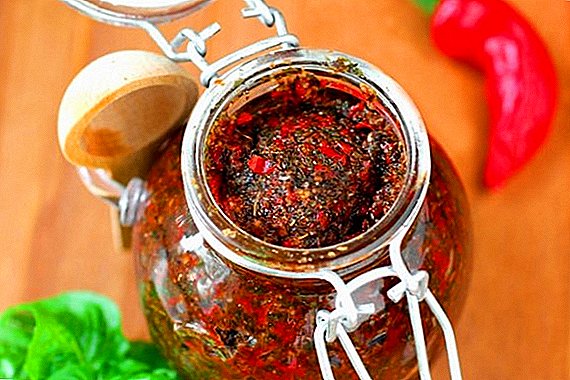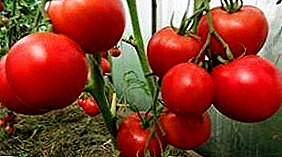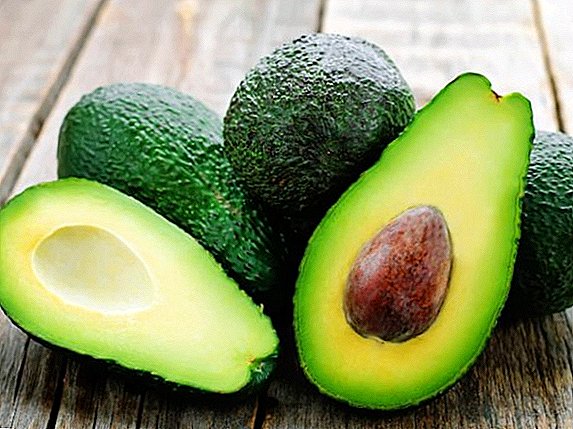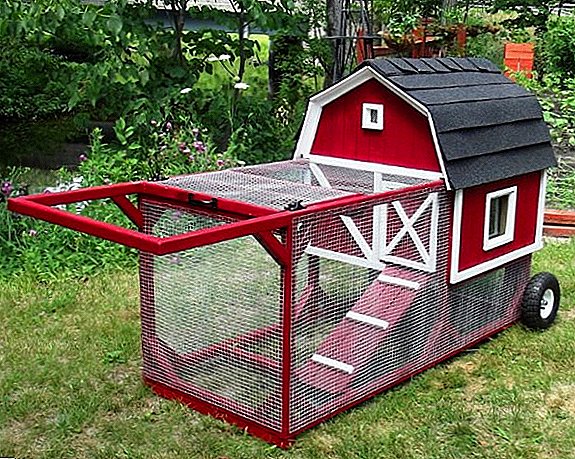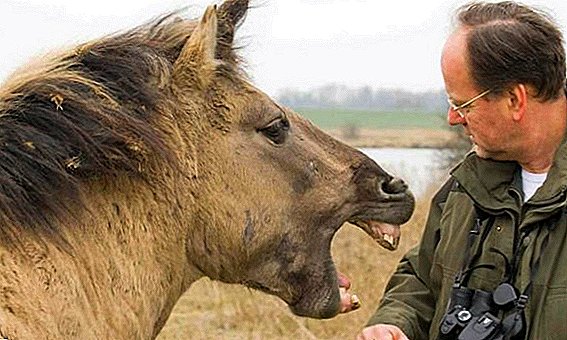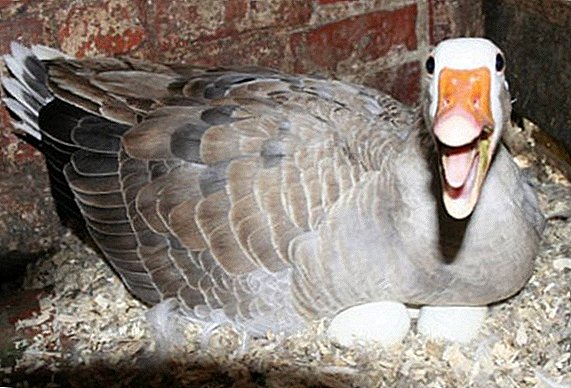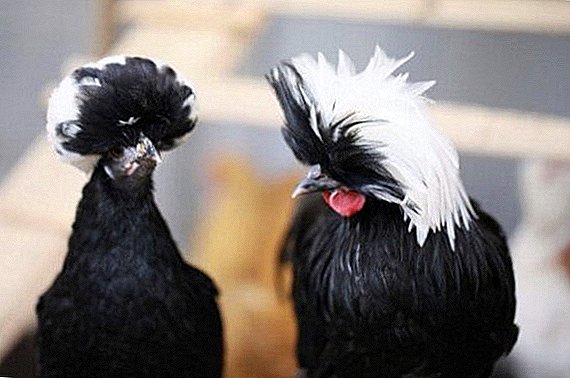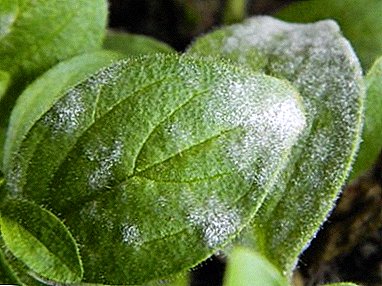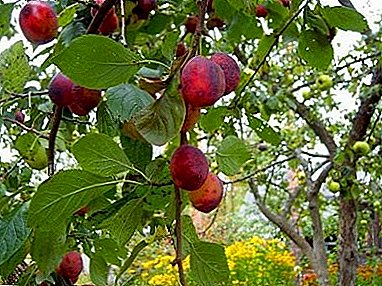
The plum "Etude" variety is bred specifically for the central part of the Russian Federation.
It has large, sweet fruits for technical purposes.
It tolerates frost and drought tolerance.
Not affected by pests and fungal diseases.
Description of plum Etude
Plum "Etude" refers to table varieties for special technical purposes.
Fruit varieties are large, rounded oval, maroon-lilac shade. Palpation feels thick wax.
Pulp strong, emerald-amber shade with abundant juicing. To taste the plums are sweet, with a slight sourness.
Have a tasting assessment. 4.3 points out of 5 possible.
Bone small, elongated, rounded. From the fruit is separated perfectly.
The fruits contain: titrated acids from 1.90 to 1.96%; dry matter from 15.0 to 15.4%; Sahara from 7.0 to 7.16% (in the solar year, the sugar content rises to 11.90%); R-active catechins from 140 to 142%. Per 100 grams of the product content of ascorbic acid varies from 14.0 to 15.0 milligrams.
The trees are tall, have an oval crown. Bark skeletal stems and trunk with weak ribbing, brown shade with a slight silver coating.
Chechevichek a small amount.
Shoots smooth, wide, brown hue.
They have a large number of miniature amber lentils. Internodes are large.
Kidney ordinary with a slight indentation of the stems, brown shade. They have a short pointed top and a shape in the form of a cone.
Leaves large, elongated, oval, emerald hue. Have a slight wrinkling. The leaf plate is curved. The edges are hilly, low-haired. The tip of the thin-pointed with a clear transition to the spout. The base is egg-shaped. The scape is small, wide, with bright pronounced pigmentation. The glands are powerful, ovate. There are 1-2 glands on the leaf stalk.
A photo
A more visual photo of the plum "Etude" can be viewed below:



Hybridization and distribution
Plum "Etude" is known with 1985. Bred in VNIIGISPR them. I.V. Michurin.
 Variety obtained through plum hybridization "Volga beauty" (Variety with one-dimensional large fruits, bred in 1939) and plums "Eurasia 21" (Winter-hardy, seminal complex interspecific hybrid). Synonym: Prunus.
Variety obtained through plum hybridization "Volga beauty" (Variety with one-dimensional large fruits, bred in 1939) and plums "Eurasia 21" (Winter-hardy, seminal complex interspecific hybrid). Synonym: Prunus.
Originator varieties Kursakov Gennady Alexandrovich. Plum "Etude" is widespread in the central part of the country.
This fruit tree every year covers the most large-scale planting space. Distributed in Moscow, Leningrad, Yaroslavl, Voronezh regions. Grows in Belarus, Ukraine, Moldova, Kazakhstan, Estonia. Great for small garden plots. The variety is loved by both professionals and amateur gardeners.
Features grade
Flowers powerful, ovate-shaped petals, not adjacent to each other.
Anthers are below the stigma of the pistil. Early flowering tree, falls on May 20-31. Sort self-infertile.
The best pollinator is a plum "Zarechnaya early".
Fruit ripening is annual, stable. From one tree is collected to 20 kilograms fruits. Harvesting takes place in late August.
Fruits are stored in cool storage for a long time. up to 60 days.
Plums have a universal purpose. Fine transportable over long distances. Winter hardiness kidney and wood very high. The variety does not require mandatory shelter for the winter.
The tree tolerates drought tolerance, hot summer and abundant sunshine. With good sunny weather, the fruits are gaining more sugar and become the sweetest.
Watering the tree is normal - 1.2 times a week. In hot weather, you can increase up to 3 times a week.
Landing
 Plum should be planted in autumn period after the growing season. In the apathetic state of plum, it tolerates the stress that is caused by planting or transplanting a cutting to another place.
Plum should be planted in autumn period after the growing season. In the apathetic state of plum, it tolerates the stress that is caused by planting or transplanting a cutting to another place.
Buy seedlings better in special nurseries. Good planting material reduces the likelihood of disease, and in the future will produce a stable crop.
Plum is a thermophilic plant. Therefore, when choosing a landing area, one should choose well-lit, wind-blown areas, without stagnation of cold air.
Holes for cuttings should be prepared in advance. The minimum width of the hole should be about 65-75 centimeters, depth from 55 to 65 centimeters.
Fertile land and manure humus are laid on the bottom. With excessive acidity, a small amount of lime should be added to the ground.
The roots seedling neatly straighten and drip in the ground. Then trample the ground, and in the middle of the hole stick a peg, to which the plant is tied up.
The final procedure is abundant watering cutting water at room temperature.
Plum of this variety prefers moisture-absorbing loam with excellent breathability and neutral environment.
Diseases and pests
Plum variety is highly resistant to pests and diseases.
Does not suffer from bushiness, curliness, perforated spotting. Damage to the hawthorn, fruit mites, aphids and gold-tails was not observed. The variety does not require mandatory preventive treatments.
The grade of plum "Etude" has large fruits of claret-lilac shade. Have a tasting score of 4.3 points out of 5 possible. To taste the plums are sweet, with a slight sourness.
Fruits are stored in cool storage for a long time. up to 60 days.
Winter hardiness of the tree is high. Trees are not affected by pests and diseases. The variety is loved by both professionals and amateur gardeners.


